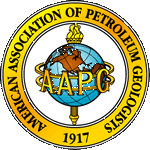

 |
 |
October 13, Friday, 19-00, the Conference Hall of ō MSU Science Park ö Henry W. Posamentier Anadarko Petroleum Corporation, Calgary , Alberta , Canada
|
 |
Henry Posamentier is a world-recognized sequence stratigrapher and a 2006 Distinguished Lecturer for AAPG . He helped pioneer many of the original concepts of seismic stratigraphy in the late 1970' s and throughout the 80's while a researcher at Exxon/Mobile. He specializes in fields of sequence stratigraphy and depositional systems analysis, where he has published widely. Most recently, he has employed an interdisciplinary approach to geologic prediction using 3E seismic visualization integrated with borehole data to interpret depositional systems and develop basin fill histories, in particular with reference to deep-water depositional settings. His current responsibilities involve ensuring integration of appropriate technologies into the exploration process. He is a member of the American Association of Petroleum Geologists, International Association of Sedimentologists, SEPM (Society of Sedimentary Geology) and the Canadian Society of Petroleum Geologists. TNK-BP is pleased to sponsor HenryÆs tour in Russia. |
|
Imaging Elements of Depositional Systems from Shelf to Deep Basin using 3D Seismic Data: Implications for Exploration and Development: 3D seismic data can play a vital role in hydrocarbon exploration and development especially with regard to mitigating risk associated with presence of reservoir, source, and seal facies. Such data can afford direct imaging of depositional elements, which can then be analyzed by applying seismic stratigraphic and seismic geomorphologic principles to yield predictions of lithologic distribution, insights to compartmentalization, and identification of stratigraphic trapping possibilities. Benefits can be direct, whereby depositional elements at exploration depths can be identified and interpreted, or they can be indirect, whereby shallow-buried depositional systems can be clearly imaged and provide analogs to deeper exploration or development targets. Examples of imaged depositional elements from both shallow- and deeply-buried sections are presented. In addition, depositional settings ranging from non-marine to deep-marine will be shown. Common techniques for geologic visualization include 1) visualizing stratigraphic horizons, 2) time slicing and flattened time slicing, 3) interval attribute analysis (including seismic waveform analysis), 4) voxbody interpretation and mapping, 5) 3D perspective rendering, and 6) opacity rendering. . Stratigraphy, Sedimentology and Geomorphology of Deep Water Deposits Based on Analysis of 3D Seismic Data: The understanding of deep-water deposition has benefited greatly from analyses of 3-D seismic data. These data have afforded a fundamental re-evaluation of the architecture and geomorphology as well as the mechanics of sedimentation of deep-water deposits. This quantum leap forward in our understanding of these deposits has enabled the oil and gas industry to significantly reduce risk associated with reservoir prediction. The great complexity of deep-water depositional environments can be simplified by grouping depositional elements into five major categories: 1) turbidity-flow leveed channels, 2) channel-overbank sediment waves and levees, 3) frontal splays/distributary channel complexes, 4) crevasse splay complexes, and 5) debris-flow channels, lobes and sheets. Each depositional element type displays a unique morphology and seismic-stratigraphic expression. Their reservoir architecture is a function of the interaction between sedimentary process, sea-floor morphology, and sediment grain size distribution. Each depositional element is associated with a characteristic suite of lithofacies that can be predictable. Principal sand habitats in deep-water settings include channels, fontal splays, and crevasse splays. Analyses of 3-D seismic data can be based on a broad range of horizon attributes, such as amplitude, time/depth structure, dip azimuth, dip magnitude, curvature, and roughness, as well as interval attributes such as frequency and amplitude distribution, and seismic facies based on waveform. Examples of the seismic expression of deep-water deposits from numerous basins worldwide will be shown
|
|
|
|